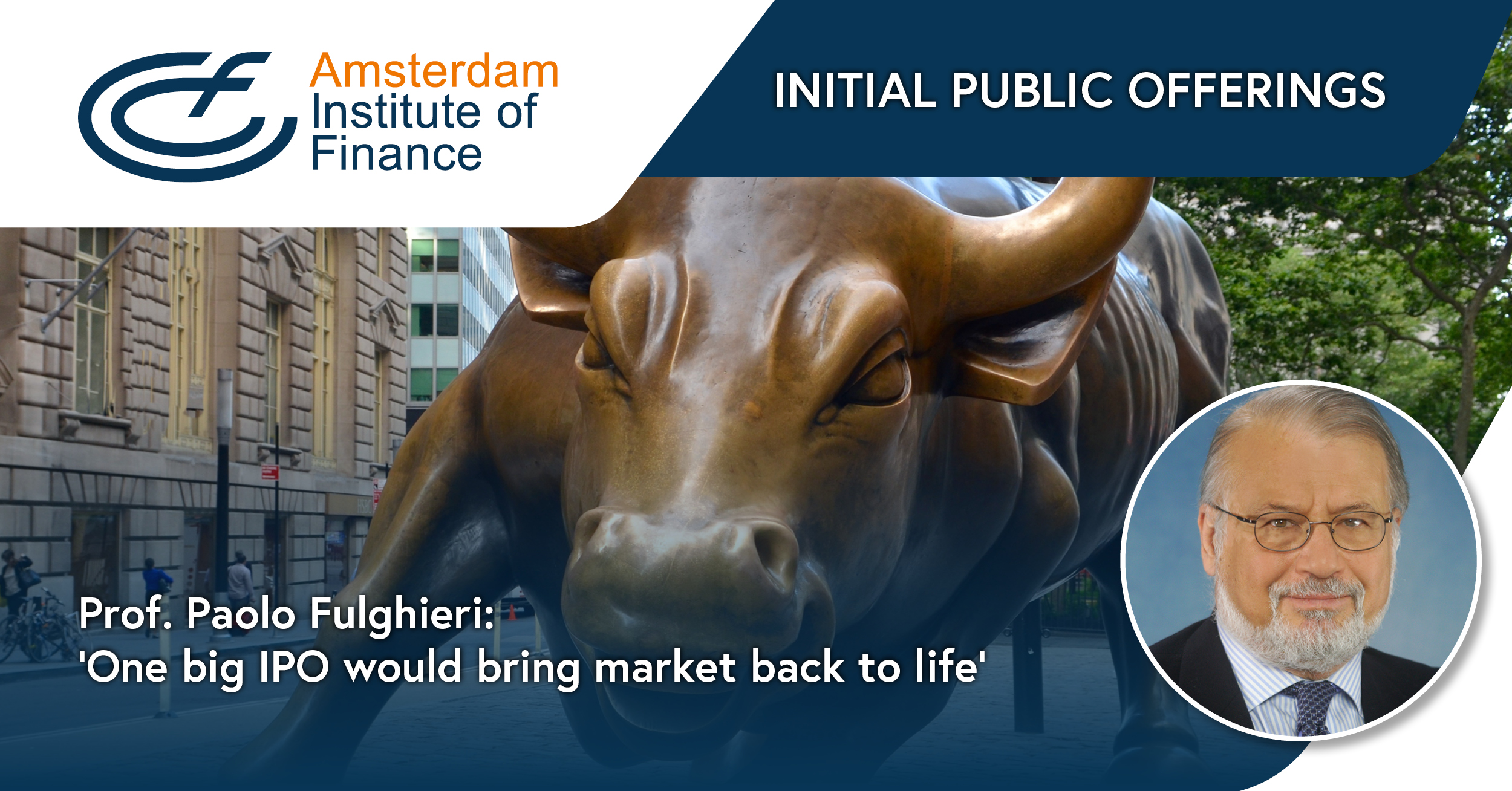
Equity markets have been making quite a run over the past few years. At the same time, the flow of new companies listing on the exchanges was no more than a trickle.
To kickstart the market, typically a big IPO is needed, explains Paolo Fulghieri, the Macon G. Patton Distinguished Professor of Finance at the University of North Carolina’s Kenan-Flagler Business School. Professor Fulghieri also teaches the Initial Public Offerings program at the Amsterdam Institute of Finance.
“The IPO market is fundamentally cyclical. Hot markets with high volumes, high valuations, and strong first day performances alternate with cold markets, where volumes drop dramatically.”
Paolo Fulghieri, Professor of Finance University of North Carolina

Hot markets alternate with cold markets
“The IPO market is fundamentally cyclical. Hot markets, characterized by very high volumes in terms of the number of IPOs, high valuations, and strong first day performances, alternate with cold markets with volumes going down dramatically.”
Over the past few years the market has been freezing cold. After a strong start to 2020, the market closed down due to Covid. While the S&P 500 rose over 150% since its low in March 2020, the IPO market stayed down as investor demand was low, and the supply of companies wanting to go public was limited.
To change this, one big, successful IPO is needed, Fulghieri predicts. Typically this will be an IPO by a company from the technology sector, for instance, a company active in AI, artificial intelligence. “That would in a way check all the boxes: from having high sales growth, high potential growth, to requiring capital. Bioscience is another possible suspect. There’s always a lot of potential growth embedded in the biosciences.”
Large backlog of companies
When the tide turns, the market could pick up a lot of steam fairly quickly. The past few years a large backlog of companies has been building because private equity and venture capital investors held companies back from public markets. Fulghieri: “Those funds are loaded with mature companies ready to go public. Globally they are sitting on more than 28,000 companies, valued at, in total, more than three trillion dollars.”
Behind this lies a fundamental shift towards private capital as the financier of choice for many young, growing companies. “Private capital has over time become cheaper and more competitive than public capital. As a result, the relative prices between the private market, and the equity market have shifted in favor of the first. What exacerbated this is that equity markets became costlier because of increasing regulation.”
“Failing at an IPO can be very damaging for a company and its investors. They’re putting everything out there, allowing everybody to weigh in.”
High valuations
So far, high equity valuations in the markets have not been able to convince investors to list their companies. From their perspective, prices are still too low, Fulghieri adds. “Based on earlier financing rounds, many companies are marked in the books at a very high valuation. That’s a result of the easy money that we’ve had earlier, the low interest rate environment. So, if you go public, you will probably have to do that at a valuation below the previous rounds of financing. However, going public at a price below the price in the books, can have a very damaging effect on the valuation of the remaining portfolio.”
On top of that, entering a sales process is risky, especially in a muted IPO market. “Failing at an IPO can be very damaging for a company and its investors. They’re putting everything out there, allowing everybody to weigh in. It can take years to recover from a negative outcome. In fact, very often, companies that failed at an IPO, will be sold in a trade sale. They will become the target of an acquisition and typically not a very high price will be paid.”
Market showing signs of picking up
In 2024 the IPO market showed some initial signs of picking up, Fulghieri sees. At the same time he cautions that the rebound has been uneven. Not all regions are showing the same strength. “In the first three quarters in North America we’ve had a 24% annual increase in the volume of IPOs and a 37% increase in proceeds. In Europe, the Middle East, Africa and India, we had an increase of 36% in volume and 45% in proceeds. At the same time in Asia Pacific, which is dominated by China, we had a decrease of 43% in volume, and 67% in proceeds.”
What happens in China will be important going forward, he concludes, looking ahead. “The Chinese government has launched a one trillion dollar program to revive the economy. We will need to see how that works out. At the same time, in China they have a big problem with the real estate market that will have to be resolved. That could turn out to be a risk factor for the rest of the world as well.”
Prof. Paolo Fulghieri teaches the programs Initial Public Offerings, Project Finance and PPPs, and Energy Transition Finance at Amsterdam Institute of Finance. Learn more & reserve your place here.